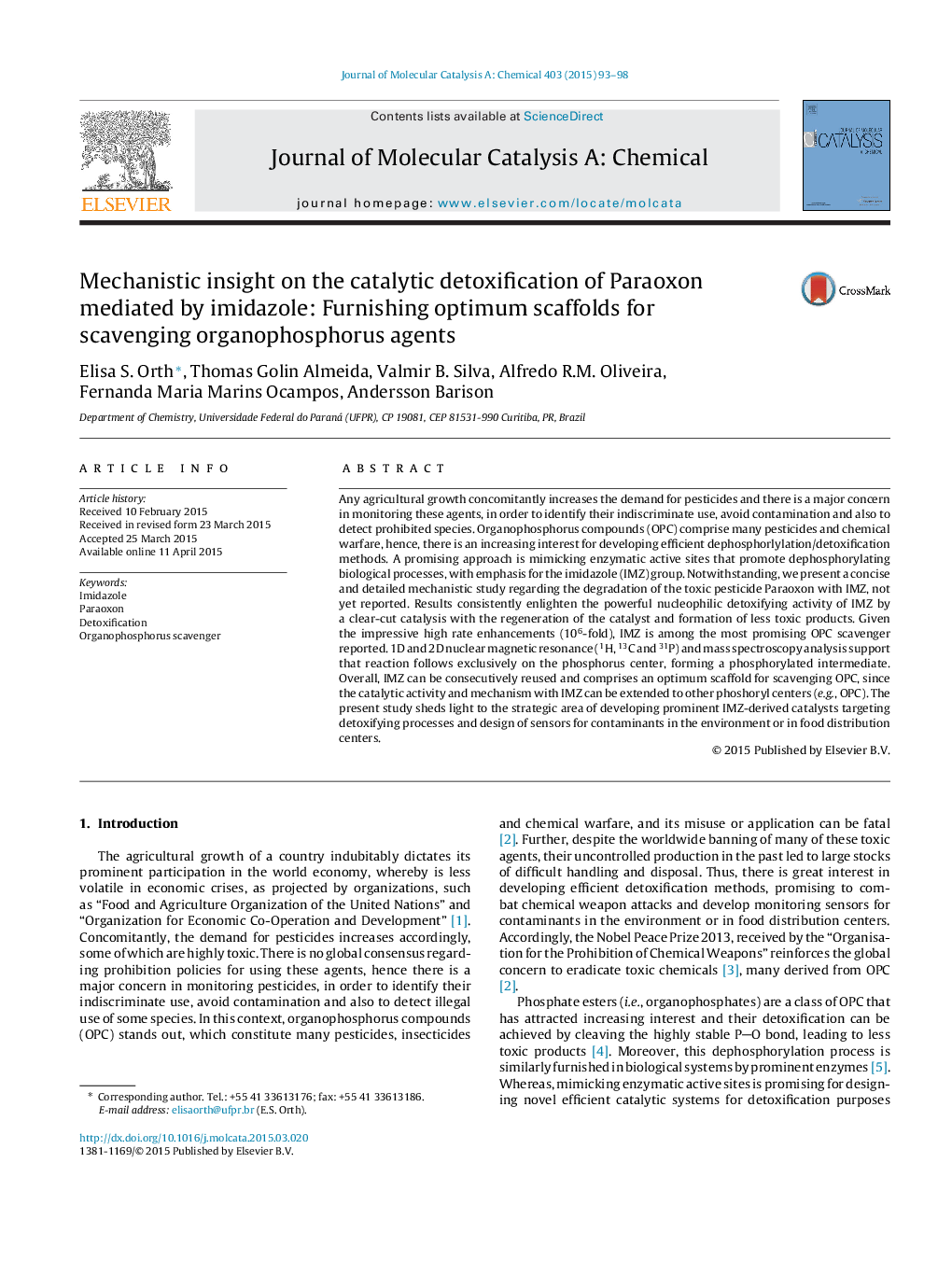| کد مقاله | کد نشریه | سال انتشار | مقاله انگلیسی | نسخه تمام متن |
|---|---|---|---|---|
| 65036 | 48379 | 2015 | 6 صفحه PDF | دانلود رایگان |
• Mechanistic study for degradation of the toxic pesticide Paraoxon with imidazole.
• Powerful nucleophilic detoxifying activity of imidazole by a clear-cut catalysis.
• Regeneration of the catalyst and formation of less toxic products.
• Imidazole is among the most promising OPC scavenger reported.
Any agricultural growth concomitantly increases the demand for pesticides and there is a major concern in monitoring these agents, in order to identify their indiscriminate use, avoid contamination and also to detect prohibited species. Organophosphorus compounds (OPC) comprise many pesticides and chemical warfare, hence, there is an increasing interest for developing efficient dephosphorlylation/detoxification methods. A promising approach is mimicking enzymatic active sites that promote dephosphorylating biological processes, with emphasis for the imidazole (IMZ) group. Notwithstanding, we present a concise and detailed mechanistic study regarding the degradation of the toxic pesticide Paraoxon with IMZ, not yet reported. Results consistently enlighten the powerful nucleophilic detoxifying activity of IMZ by a clear-cut catalysis with the regeneration of the catalyst and formation of less toxic products. Given the impressive high rate enhancements (106-fold), IMZ is among the most promising OPC scavenger reported. 1D and 2D nuclear magnetic resonance (1H, 13C and 31P) and mass spectroscopy analysis support that reaction follows exclusively on the phosphorus center, forming a phosphorylated intermediate. Overall, IMZ can be consecutively reused and comprises an optimum scaffold for scavenging OPC, since the catalytic activity and mechanism with IMZ can be extended to other phoshoryl centers (e.g., OPC). The present study sheds light to the strategic area of developing prominent IMZ-derived catalysts targeting detoxifying processes and design of sensors for contaminants in the environment or in food distribution centers.
Figure optionsDownload high-quality image (220 K)Download as PowerPoint slide
Journal: Journal of Molecular Catalysis A: Chemical - Volume 403, July 2015, Pages 93–98
